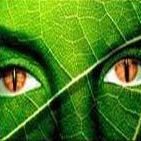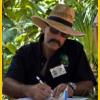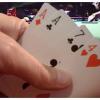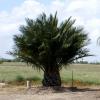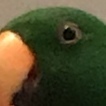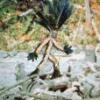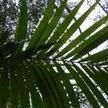Leaderboard
Popular Content
Showing content with the highest reputation on 01/25/2010 in all areas
-
-Did you know PalmTalk now supports the uploading of multiple photos? You can choose 4 at a time to upload. (I may change that to 5) When posting a photo look for "Help with attaching files" Try our advanced uploader which supports multiple file uploading (modern browser required)" Then proceed and look for "Enable Flash Uploader." Check it and you will then be able to choose multiple files to be uploaded all at once. -Did you know there appears to be an option for a "skin" that makes using the Forum from mobile devices easier and faster. A PalmTalk Lite, so to speak. Has anyone tried PT from an mobile device yet? I'm not sure if it is activated. -Did you know multiple members can now join in your PMs, since they now take the form of a regular thread? -Did you know clicking on the PT logo takes you to the Main Page? -Did you know you can get rid of the "new" column on the right (on the Main Page) by clicking on the tiny "x" at the top of the column? If you want it back, look for the very tiny little "gizmo" in approximately the same place. If you find any more tips & tricks, let us know. I'll do the same.3 points
-
It's been two weeks and we have been into the high 70's and low 80's several days, so hopefully most of the damage is evident now. To recap we hit a low of 12F at my house and were below 15F for at least 9 hours. This was the type of freeze we see maybe once a decade. We get that cold about 1/2 our winters, but not for the duration we saw this time. Normally, we might be below 15F for an hour after a warm afternoon with a quick recovery to much higher temperatures. Most of these palms survived a very brief 14F with no damage 2 years ago. I will break these up into 3 groups: First, the undamaged: Brahea armata; Brahea decumbens (largest one); Brahea moorei (covered with a box); Butia capitata; Butia capitata (silver form); Butia archeri Butia eriospatha; Butia paraguayensis; Butia species (no scientific name yet, clumping Butia with subterranean trunks); Butia capitata x Jubaea; Butia capitata x Parajubaea coccoides (fronds bronzed by snow previously, but no additional damage from cold covered only with a box); Chamaedorea microspadix (under a bucket); Chamaedorea radicalis (under a bucket); Chamaerops humilis; Chamaerops humilis var Cerifera; Jubaea chilensis; Nannorhops ritchiana (smallest one); Sabal causiarum (36" box on my driveway); Sabal guatamalensis; Sabal mexicana; Sabal minor; Sabal palmetto; Sabal riverside; Sabal rosei; Sabal texensis; Sabal uresana; Trachycarpus fortunei; Trachycarpus nanus; Trachycarpus takil; Trachycarpus wagnerianus; Trithrinax acanthicoma; Trithrinax campestris; Washingtonia filifera; Second, spear pulls, but older fronds undamaged (these are mostly small palms 5 gallon or smaller, and most were covered by a bucket or box): Brahea decumbens (small ones, unprotected); Butia yatay; Butia paraguayensis x Syagrus; Butia yatay x Syagrus; Jubutiagrus; Phoenix theophrastii; Rhapidophyllum hystrix (unprotected); Serenoa repens (blue, green and silver)( not established yet, and unprotected); Trachycarpus princeps; Third, the completely or mostly fried (I'm confident most of these will recover): Allagoptera arenaria (older fronds damaged previously by snow now dead, new fronds fine, covered with frost cloth); Brahea aculeata (covered by a box); Brahea clara (not established yet, some still in 30 gallon containers, older fronds bronzed, newer ones fine); Brahea edulis (older fronds fried, newer ones still green); Butia capitata x Syagrus (not established yet with no old fronds, tender new growth burnt); Livistona chinensis (under a bucket); Livistona decipiens (under a box); Livistona mariae (under a bucket); Nannorhops ritchiana (2 largest ones); Phoenix canariensis; Phoenix dactylifera; Phoenix loureirii (older fronds burnt by snow and 20F, remaining fronds damaged by 12F); Phoenix sylvestris (45 gallon containers on my driveway); Sabal bermudana; Sabal yapa (burnt by snow and 20F); Syagrus romanzoffiana (burnt by snow and 20F); Trachycarpus latisectus (5 gallon size); Trachycarpus "Naga Hills" (5 gallon size); Washingtonia filibusta; Washingtonia robusta. I will be updating the freeze damage data section with this info, but thought it would be nice to see it all in one spot. Anything that surprises anybody either way on the list above?1 point
-
In South Palm Beach County we hit a low of 34ish... none were protected except my C. renda (still looks somewhat OK). Randy These did poorly but will survive, Licuala grandis Areca catechu, ipot, vestaria Prichardia pacifica Hydriastele pinangoides Deckenia nobilis Hyophorbe lagenicaulis Pinangas These did kinda Ok, just a little damage, Cocos Dictyosperma Gaussia Clinostigma Coccothrinax Dypsis leptocheilos Most Hydriastele Ptycosperma Siphokentia Veitchia No damage Carpoxylon Calyptrocalyx Most Licualas Chambeyronia Most Dypsis Heterospathe Johannesteijsmannia Kentiopsis Pelegadoxa1 point
-
I just tried it on my android phone and it worked great, not sure about the other skin but it did appear to be more compact. Matt1 point
-
Well here is an update... it's been a couple of weeks since the last hard freeze (16F) and several weeks since the first hard freeze (21F), so I am confident that I am seeing most of the damage. No doubt there is a chance that some additional damage may show up as we go into spring but for now this will provide a decent assessment of the damage that occurred from these two freezes. Jv UNDAMAGED: Brahea armata; Butia capitata (silver form); Butia capitata x Jubaea (in ground and potted); Butia capitata x Parajubaea coccoides; Butia capitata x Syagrus; Butia yatay (3 gal pot); Chamaedorea microspadix (next to house); Chamaerops humilis; Chamaerops humilis var Cerifera; Jubaea x Butia x Jubaea (3 gal pot); Jubaea chilensis (5 gal pot); Nannorhops ritchiana (seedling); Rhapidophyllum hystrix; Sabal bermudana (sold as bermudana but could be domingensis/guatamalensis); Sabal causiarum (seedling); Sabal causiarum x palmetto (seedlings); Sabal mexicana; Sabal minor; Sabal minor var Tamaulipas; Sabal palmetto; Sabal riverside; Sabal xtexensis; Sabal uresana; Serenoa repens; Trachycarpus fortunei; Trachycarpus takil; Trachycarpus wagnerianus; Trithrinax acanthicoma; Trithrinax campestris; MODERATELY BURNED (50-80%) : Cycad revoluta; Livistona decipiens/decora; Phoenix dactylifera; Phoenix dactylifera x canariensis; Phoenix theophrastii; Washingtonia filibusta; SEVERLY BURNED (80-100%): Livistona australis; Livistona chinensis; Livistona chinesis x saribus: Livistona saribus; Phoenix canariensis; Phoenix sylvestris; Phoenix roebelenii x canariensis; Phoenix rupicola x canarienis Phoenix rupicola x reclinata Rhapis excelsa; Sabal Unknown (S. minor characteristics less hardiness-maybe etonia); Syagrus romanzoffiana; Trachycarpus martianus; Washingtonia robusta.1 point
-
Well here is my damage report from San Antonio... Jv UNDAMAGED: Brahea armata; Butia capitata (silver form); Butia capitata x Jubaea (in ground and potted); Butia capitata x Parajubaea coccoides; Butia capitata x Syagrus; Butia yatay (3 gal pot); Chamaedorea microspadix (next to house); Chamaerops humilis; Chamaerops humilis var Cerifera; Jubaea x Butia x Jubaea (3 gal pot); Jubaea chilensis (5 gal pot); Nannorhops ritchiana (seedling); Rhapidophyllum hystrix; Sabal bermudana (sold as bermudana but could be domingensis/guatamalensis); Sabal causiarum (seedling); Sabal causiarum x palmetto (seedlings); Sabal mexicana; Sabal minor; Sabal minor var Tamaulipas; Sabal palmetto; Sabal riverside; Sabal xtexensis; Sabal uresana; Serenoa repens; Trachycarpus fortunei; Trachycarpus takil; Trachycarpus wagnerianus; Trithrinax acanthicoma; Trithrinax campestris; MODERATELY BURNED (50-80%) : Cycad revoluta; Livistona decipiens/decora; Phoenix dactylifera; Phoenix dactylifera x canariensis; Phoenix theophrastii; Washingtonia filibusta; SEVERLY BURNED (80-100%): Livistona australis; Livistona chinensis; Livistona chinesis x saribus: Livistona saribus; Phoenix canariensis; Phoenix sylvestris; Phoenix roebelenii x canariensis; Phoenix rupicola x canarienis Phoenix rupicola x reclinata Rhapis excelsa; Sabal Unknown (S. minor characteristics less hardiness-maybe etonia); Syagrus romanzoffiana; Trachycarpus martianus; Washingtonia robusta.1 point
-
Bruce- Thanks for the Neoveitchia in bloom post. This is one of the things that makes this plant so fickle. The male and female flowers will not open on the same bract at the same time, so the first bract has to be pollinated by the males of the second (if they open), and second to third, and so on. That is why you see so few seeds on there. You need a whole grove to get the party going!1 point
-
Hi Rafael! Great new palms you got there! Yours palms are Howea fosteriana,Brahea armata,Ravenea rivularis and Bismarckia nobilis ''Silver'',in that order. I dont see any Howea belmoreana. You could do what you say as long as you position the Ravenea and the Howea in shade as they will probably burn in sun,being shade grown. You can however let your Bismarckia nobilis and Brahea armata sit outside permanently in full sun as they will take it without problems and will be better than in the shade of the house. Just bring the Bismarckia in when temprature is predicted to fall to near 0C or under it to not risk any freeze damage. Your Brahea will be fine outside even in the coldest of the nights I would love to see a photo of your large Howea and how its doing after the -3C. I hope its not too bad1 point

